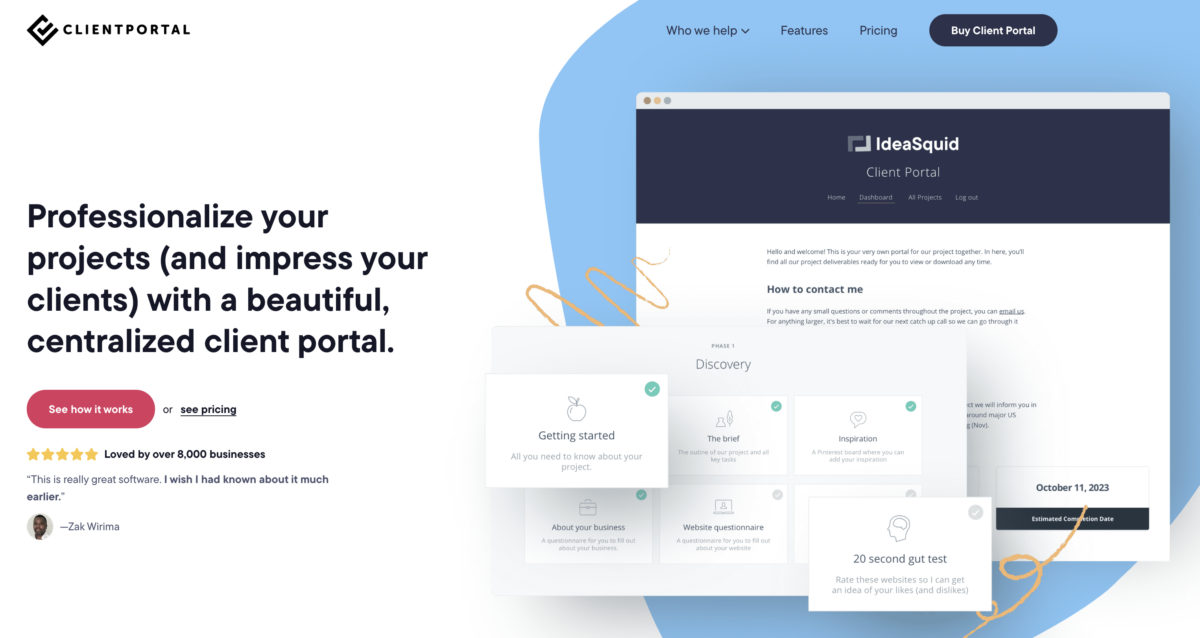Best CRM for Event Planners
Imagine having a comprehensive system at your fingertips that can streamline your event planning processes, improve your customer engagement, and increase your overall efficiency. This is what a Customer Relationship Management (CRM) system can offer to event planners. In the fast-paced world of event planning, a CRM system is not just a nice-to-have, but a necessity. It can cater to the unique needs of event planners, from managing attendees and sponsors to tracking expenses and feedback. But what makes a good CRM for event planners? Let’s find out.

Understanding What Makes a Good CRM for Event Planners
Choosing a CRM system isn’t a one-size-fits-all situation, especially when it comes to event planning. There are several key features that event planners should look for in a CRM system. Ease of use is paramount – event planners are busy people, and a complex system could add to their workload rather than reduce it. Customization is another important factor, as event planners often have unique needs that a generic CRM might not cater to.
Integration capabilities are also crucial. A good CRM should be able to seamlessly integrate with other software used in event planning, such as ticketing systems, email marketing tools, and accounting software. Lastly, robust reporting tools are a must-have. The ability to generate detailed reports can provide valuable insights into attendee behavior, event success, and areas for improvement.
The Importance of a CRM in Event Management
At its core, event management is about people – attendees, sponsors, vendors, and staff. A CRM system can help event planners to manage, track, and communicate with all these parties effectively. Think of it as a central hub for all your event-related data. It can store attendee information, track ticket sales, manage communications, and much more.
Furthermore, a CRM system can help streamline the event planning process. From setting up the event and selling tickets to monitoring attendee engagement and gathering feedback, a CRM can automate and simplify these tasks. This not only saves time but also reduces the chances of errors that can occur when these tasks are done manually.
So, what’s the takeaway? A good CRM system is an invaluable tool for event planners. It can help you manage your events more efficiently, understand your attendees better, and ultimately, make your events more successful.
Assessing Top CRM Tools for Event Planners
When it comes to managing customer relations and streamlining event planning processes, there is a plethora of CRM tools on the market. However, not all of them are created equal. Some are more suited for event planning than others, offering features and capabilities specifically tailored to the needs of event planners. So, how do you sift through the numerous options to find the best fit? Let’s explore some highly-rated CRM tools that resonate well with the event planning industry.
Before we dive in, remember that the best CRM tool for you depends on your specific needs and circumstances. What works for one event planner might not work for another. Therefore, it’s essential to understand your needs and evaluate each tool accordingly.
Feature Comparison of Selected CRM Tools
Comparing features is a practical way to assess the value of different CRM tools. Let’s take a look at some of the key aspects you should consider:
- User Interface: Is the software easy to navigate? Does it have a clean, intuitive design? User-friendliness is a crucial factor as it directly impacts your productivity.
- Customization: Can you customize the software to suit your specific needs? The ability to tailor the tool to fit your processes can significantly enhance its effectiveness.
- Integration: How well does the tool integrate with other software you’re currently using? Seamless integration can streamline your workflow and avoid unnecessary complications.
- Pricing: Is the pricing plan reasonable and provides good value for money? Consider your budget and the return on investment the tool can offer.
- Customer Support: Does the provider offer reliable customer support? When you encounter issues or have questions, timely and helpful support can be a lifesaver.
As you evaluate different CRM tools based on these factors, you’ll start to get a clearer picture of which ones might be the best fit for your event planning business.
User Reviews and Ratings
While feature comparison is essential, it only tells part of the story. To get a more comprehensive understanding of a CRM tool, it’s also important to consider user reviews and ratings. These can provide valuable insights into the actual user experience, which might not be evident from the tool’s feature list.
What are other event planners saying about the tool? Are they satisfied with its performance? Do they find it easy to use? Have they encountered any problems? User reviews can answer these questions and more, helping you make a more informed decision.
However, remember to take user reviews with a grain of salt. People’s experiences can vary based on multiple factors, and what works (or doesn’t work) for one person might not be the same for another. Therefore, use these reviews as just one of many factors in your decision-making process.
Choosing the Right CRM for Your Event Planning Needs
When it comes to managing your event planning business, using the right tools can make all the difference. So how do you choose the right CRM system? The answer lies in understanding your business needs, size, and budget.
Firstly, it’s crucial to define your needs. Are you looking for a CRM that can manage your contacts and attendees? Or maybe you need a system that can also handle ticketing and event registrations. Perhaps you’re after a comprehensive CRM that can handle all these tasks and more, including marketing campaigns, surveys, and reports. Once you’ve defined what you need, you can start looking for a CRM system that ticks all the boxes.
Secondly, consider the size of your business. If you’re a solo event planner or a small team, you may not need a complex CRM system with a plethora of features that you’ll never use. On the other hand, if you’re running a larger operation, a more robust CRM might be necessary to handle the volume of data and tasks.
The Role of CRM in Enhancing Client Relationships in Event Planning
But why is a CRM system so crucial in event planning? Well, it’s simple – it can significantly enhance your relationship with your clients. Let’s unpack this a bit.
Firstly, a CRM system can improve communication with your clients. It allows you to keep track of every interaction, ensuring that nothing slips through the cracks. This way, your clients feel valued and heard, which can significantly boost their satisfaction and loyalty. Can you imagine the impact of this on your business?
Secondly, a CRM system gives you a holistic view of your clients. It allows you to see their past interactions, their preferences, and their feedback. This means you can anticipate their needs and preferences, leading to a more personalized and effective service. Isn’t this what every client wants?
Finally, a CRM can help you streamline your processes, making you more efficient and effective. This means that you can focus more on delivering top-notch events that exceed your clients’ expectations. And when you exceed expectations, you not only retain clients but also attract new ones. Isn’t this what every event planner dreams of?

Implementation and Successful Use of CRM in Event Planning
So, you’ve determined the perfect CRM for your event planning needs. How do you ensure this software is effectively implemented and used to its full potential? Let’s walk through some key steps.
Firstly, it’s important to clearly define your objectives. What exactly do you aim to achieve with this CRM? Are you looking to streamline communication, improve attendee tracking, or enhance sponsor management? Setting clear goals will guide your implementation process and help measure success.
Next, remember to train your team adequately. A CRM system, no matter how intuitive or user-friendly, is only as good as the people using it. Ensure your team is familiar with the software’s features and functions and understands how to use it effectively.
Finally, continually review and adjust your CRM usage. Are you making the most out of its features? Are there areas you could use it more effectively? Regular reviews will help you optimize your CRM usage and derive maximum value from it.
Future of CRM in Event Planning
What does the future hold for CRM systems in event planning? While no one can predict with absolute certainty, there are some trends we can anticipate with a high degree of probability.
Firstly, we can expect CRM systems to become more intuitive and user-friendly. As technology continues to evolve, these systems will likely become easier to navigate and more adaptive to individual user needs.
Secondly, CRMs will likely offer more robust integration capabilities. The ability to seamlessly integrate with a wide range of other software and tools is becoming increasingly important, and it’s likely that future CRM systems will excel in this area.
Lastly, we can expect to see more advanced analytics and reporting capabilities. This will allow event planners to gain deeper insights into their events and make more data-driven decisions.
As we look towards the future, it’s important for event planners to stay updated and adaptable. The world of CRM is evolving rapidly, and those who can keep up will reap the benefits. So, why not take the first step towards a more efficient and effective event planning process with a CRM system?










